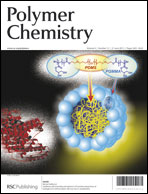Folate-conjugated poly(N-(2-hydroxypropyl)methacrylamide-co-methacrylic acid) nanohydrogels were facilely prepared via distillation–precipitation polymerization and subsequent folate modification. Due to the nanohydrogels being crosslinked with disulphide bonds, they could be easily degraded into short polymer chains in the presence of glutathione, which will be beneficial for easily discharging the nanohydrogels from the body. Doxorubicin (DOX), a clinical anti-cancer drug, was efficiently loaded in the nanohydrogels (up to 39.3 wt%) by the electrostatic interactions between the amine group in doxorubicin (DOX) and the carboxyl groups in the nanohydrogels at neutral conditions. The cumulative release profile of the DOX-loaded nanohydrogels showed a relatively low level of drug release (23 wt% in 48 h) at pH 7.4 and a quick release (over 95 wt% in 2 h) at pH 5.0 with reducing environment, exhibiting pH/redox dual-stimuli-responsive drug release. The dose-dependent cytotoxicity of the drug-loaded nanohydrogels was studied by the CCK-8 assay. The nanohydrogels possess many favourable merits of drug carriers, such as excellent biocompatibility, high drug loading capacity, minimal drug release under an extracellular condition, rapid drug release in response to the intracellular level of pH and reducing environment, and folate-mediated endocytosis, which endow them as great candidates for targeted delivery of anti-cancer drugs.

You have access to this article
 Please wait while we load your content...
Something went wrong. Try again?
Please wait while we load your content...
Something went wrong. Try again?


 Please wait while we load your content...
Please wait while we load your content...